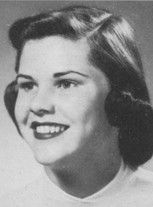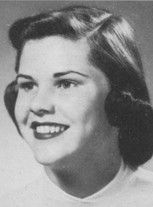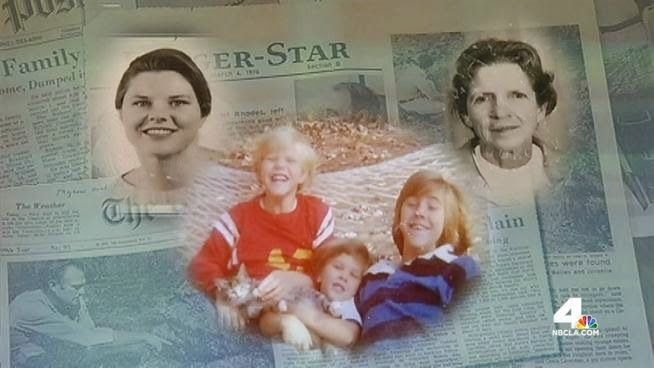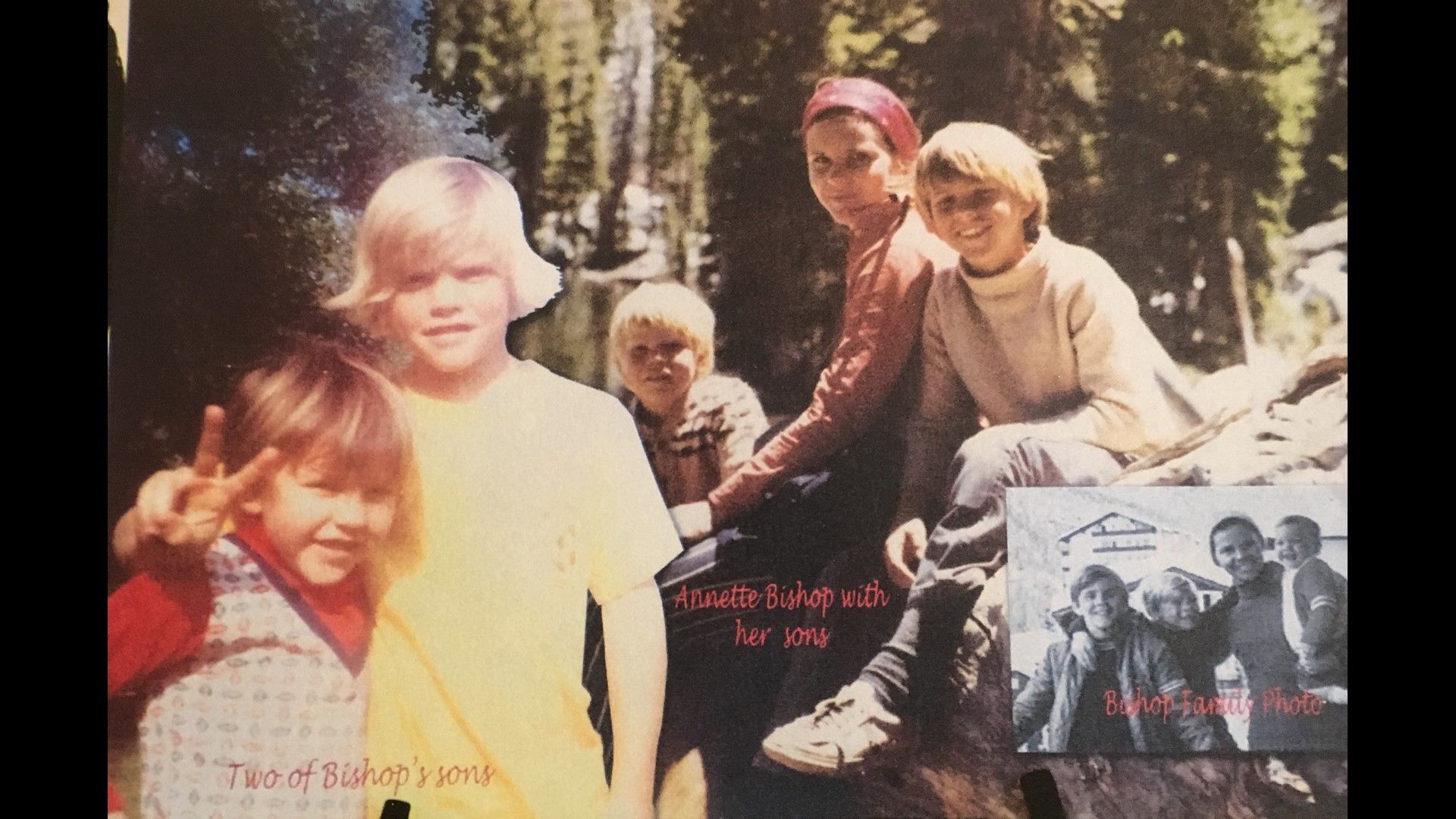Outside the house at 8103 Lilly Stone Drive, they spotted a trail of blood leading from the front door to the driveway. Inside the split-level, police found blood everywhere, in each of the four bedrooms and all over the upstairs bathroom. There were blood-soaked linens, mattresses and pillowcases, human bones, tissue, fibers and hair—but no bodies.
Eventually, police would connect the dots to an equally grisly discovery in eastern North Carolina. Days earlier, a forest ranger had spied smoke in a remote area, leading him to five charred bodies in a shallow grave. The bludgeoned remains would be identified as Bishop's wife, three sons and mother.
Bishop, however, had vanished.
More than 37 years later, Bradford Bishop—believed to have committed one of the most heinous crimes in Montgomery County history—remains gone, but hardly forgotten. He continues to haunt Ray Kight, the former sheriff of Montgomery County who worked the case early on as a deputy in the fugitive squad and continues, from his North Potomac home, to follow leads even in retirement.
The story has been replayed time and again on national television: ABC's Vanished; America's Most Wanted, which continues to carry the case on its website; and a 12-minute segment on NBC's Today Show with Katie Couric in 1998. The Washington Post revisited it on the 10th and 30th anniversaries of the slayings, as well.
All this exposure has produced so many leads that have led to so many dead ends. And questions that have led to more questions.
Was Bishop secretly working for the CIA, as a State Department co-worker surmised on the Today Show? Were the slayings premeditated, with others involved? Or was this a case of a seemingly successful man in a picture-perfect marriage who simply cracked one day? Has Bishop adopted a new identity in a foreign land? Or is he living off the grid somewhere in the States?
To the outside world, the Bishops were the perfect family, with three kids, a dog, two cars—a VW Beetle and a station wagon—and a motorcycle. They played tennis and went swimming at the community club, and liked to ski. Yale-educated, Bishop worked for the State Department; his wife, Annette, was a stay-at-home mom.
When news of the slayings hit, there was shock and disbelief throughout their suburban neighborhood off Seven Locks Road just outside the Beltway. The front-page headline in The Washington Post the day after the discovery said simply, "5 in Md. Family Found Slain. Killed in Home, Dumped in N.C.; Father Missing."
Later, investigators would reconstruct Bishop's movements on the day of the crime. That Monday—March 1, 1976—Bishop went to look at a memo listing new promotions that had been posted in a hallway of the State Department's Foggy Bottom office. According to a co-worker, Bishop became upset, saying a position that should have been his had gone to the co-worker. Bishop then went and told his supervisor that he didn't feel well and left for the day.
At 2 p.m., he withdrew $400 from the American Security Bank and drove to a Texaco station at Montgomery Mall, where he purchased 13 gallons of gas with his credit card. Four hours later, he used a credit card again to buy a gas can and a sledgehammer at Sears in the mall.
Bishop returned to his Carderock Springs home. There, police say, he bludgeoned to death Annette, 37; their three sons, William Bradford III, 14, Brenton, 10, and Geoffrey, 5; and his mother, Lobelia Amaryllis Bishop, 68. He then packed their bodies into the family station wagon, a maroon 1974 Chevy Malibu, and with their golden retriever, Leo, drove nearly 300 miles to a site off Albemarle Sound in North Carolina, where he allegedly placed the bodies in a shallow grave and set them on fire.
Nearly three weeks later, Bishop's abandoned vehicle turned up in Great Smoky Mountains National Park near Gatlinburg, Tenn. Credit card receipts found in the station wagon and eyewitness accounts indicated that he'd stopped at a sporting goods shop and then at a convenience store, but that he wasn't alone: He was seen with a woman and a dog.
Then Bishop vanished. Like D.B. Cooper—the hijacker who disappeared in 1971 after parachuting from a Boeing 727 somewhere between Seattle and Reno with $200,000 in $20 bills extorted from Northwest Airlines—Bishop has achieved legendary status. And like ax-wielding Lizzie Borden—who, the rhyme goes, "gave her mother 40 whacks"—he has been immortalized in verse. In the late '70s, a Charlottesville, Va., bluegrass band, Coup de Grass, wrote "The Ballad of Bradford Bishop."
To those who knew the family, the case remains baffling. Jacques d'Amboise, the celebrated ballet dancer and protégé of New York City Ballet's George Balanchine, is among them. He writes in his 2011 memoir, I Was a Dancer (Alfred A. Knopf), that he got to know Bishop as a teenager. Bishop's parents—Bradford Sr., a geologist, and Lobelia, who'd once dreamed of being a singer/actress—were living in Pasadena, Calif., and were both ballet fans, he writes. They took d'Amboise in to live with them for a while when he was 17 and Brad, their only child, was 14.
Brad and Annette met in high school in Pasadena, Calif., where he quarterbacked the football team and she was a cheerleader. Brad graduated in 1954; Annette, the following year.
At Yale, Bishop earned a C average before going on to earn graduate degrees in Italian at Vermont's Middlebury College and in African Studies at UCLA. He and Annette were married in San Clemente in 1959.
At the State Department, Bishop had postings in Italy, Ethiopia and Botswana, where his title was deputy chief of mission. Before entering the Foreign Service, he spent four years in U.S. military intelligence in the former Yugoslavia. He was fluent in French, Serbo-Croatian, Spanish and Italian. D'Amboise would note in his memoir that Bishop's mother was always vague about her son's jobs, and when he first learned of the murders, d'Amboise's early thought was that someone was exacting revenge for Bishop's work as "a spy."
Whatever his true work, Bishop's career was a source of tension in the marriage, according to co-workers and Annette's neighborhood friends. Bishop wanted another overseas posting, Annette didn't. She wanted to pursue an art education and had begun to take classes, but Bishop wanted her to remain a stay-at-home mom. The family was having financial troubles, too; the IRS was auditing its taxes.
Bishop's mother had helped them buy the house with a $30,000 down payment, and she moved in after her husband died. She and Annette were close, but the mother-son relationship was strained. Bishop had trouble sleeping, and twice weekly was seeing a psychiatrist, who prescribed drugs. Annette was also under psychiatric care.
*************************************** Annette Kathryn Bishop
North Carolina, Deaths, 1931-1994
Name: Annette Kathryn Bishop
Event Type: Death
Event Date: 01 Mar 1976
Event Place: Bethesda, Montgomery, Maryland
Birth Year: 1938
Burial Date: 16 Mar 1976
Burial Place: Hillsborough, Nc
Cemetery: Triangle Cremation Serv. Inc.
Residence Place: Bethesda, Montgomery, MD
Gender: Female
Age: 37
Marital Status: Married
Race Original): White
Occupation: Housewife
Birth Date: 18 Apr 1938
Birthplace: Oh
Father's Name: Gilbert Weis
Mother's Name: Eunice Weis
Spouse's Name: William Bradford Bishop Jr
************
Outside the house at 8103 Lilly Stone Drive, they spotted a trail of blood leading from the front door to the driveway. Inside the split-level, police found blood everywhere, in each of the four bedrooms and all over the upstairs bathroom. There were blood-soaked linens, mattresses and pillowcases, human bones, tissue, fibers and hair—but no bodies.
Eventually, police would connect the dots to an equally grisly discovery in eastern North Carolina. Days earlier, a forest ranger had spied smoke in a remote area, leading him to five charred bodies in a shallow grave. The bludgeoned remains would be identified as Bishop's wife, three sons and mother.
Bishop, however, had vanished.
More than 37 years later, Bradford Bishop—believed to have committed one of the most heinous crimes in Montgomery County history—remains gone, but hardly forgotten. He continues to haunt Ray Kight, the former sheriff of Montgomery County who worked the case early on as a deputy in the fugitive squad and continues, from his North Potomac home, to follow leads even in retirement.
The story has been replayed time and again on national television: ABC's Vanished; America's Most Wanted, which continues to carry the case on its website; and a 12-minute segment on NBC's Today Show with Katie Couric in 1998. The Washington Post revisited it on the 10th and 30th anniversaries of the slayings, as well.
All this exposure has produced so many leads that have led to so many dead ends. And questions that have led to more questions.
Was Bishop secretly working for the CIA, as a State Department co-worker surmised on the Today Show? Were the slayings premeditated, with others involved? Or was this a case of a seemingly successful man in a picture-perfect marriage who simply cracked one day? Has Bishop adopted a new identity in a foreign land? Or is he living off the grid somewhere in the States?
To the outside world, the Bishops were the perfect family, with three kids, a dog, two cars—a VW Beetle and a station wagon—and a motorcycle. They played tennis and went swimming at the community club, and liked to ski. Yale-educated, Bishop worked for the State Department; his wife, Annette, was a stay-at-home mom.
When news of the slayings hit, there was shock and disbelief throughout their suburban neighborhood off Seven Locks Road just outside the Beltway. The front-page headline in The Washington Post the day after the discovery said simply, "5 in Md. Family Found Slain. Killed in Home, Dumped in N.C.; Father Missing."
Later, investigators would reconstruct Bishop's movements on the day of the crime. That Monday—March 1, 1976—Bishop went to look at a memo listing new promotions that had been posted in a hallway of the State Department's Foggy Bottom office. According to a co-worker, Bishop became upset, saying a position that should have been his had gone to the co-worker. Bishop then went and told his supervisor that he didn't feel well and left for the day.
At 2 p.m., he withdrew $400 from the American Security Bank and drove to a Texaco station at Montgomery Mall, where he purchased 13 gallons of gas with his credit card. Four hours later, he used a credit card again to buy a gas can and a sledgehammer at Sears in the mall.
Bishop returned to his Carderock Springs home. There, police say, he bludgeoned to death Annette, 37; their three sons, William Bradford III, 14, Brenton, 10, and Geoffrey, 5; and his mother, Lobelia Amaryllis Bishop, 68. He then packed their bodies into the family station wagon, a maroon 1974 Chevy Malibu, and with their golden retriever, Leo, drove nearly 300 miles to a site off Albemarle Sound in North Carolina, where he allegedly placed the bodies in a shallow grave and set them on fire.
Nearly three weeks later, Bishop's abandoned vehicle turned up in Great Smoky Mountains National Park near Gatlinburg, Tenn. Credit card receipts found in the station wagon and eyewitness accounts indicated that he'd stopped at a sporting goods shop and then at a convenience store, but that he wasn't alone: He was seen with a woman and a dog.
Then Bishop vanished. Like D.B. Cooper—the hijacker who disappeared in 1971 after parachuting from a Boeing 727 somewhere between Seattle and Reno with $200,000 in $20 bills extorted from Northwest Airlines—Bishop has achieved legendary status. And like ax-wielding Lizzie Borden—who, the rhyme goes, "gave her mother 40 whacks"—he has been immortalized in verse. In the late '70s, a Charlottesville, Va., bluegrass band, Coup de Grass, wrote "The Ballad of Bradford Bishop."
To those who knew the family, the case remains baffling. Jacques d'Amboise, the celebrated ballet dancer and protégé of New York City Ballet's George Balanchine, is among them. He writes in his 2011 memoir, I Was a Dancer (Alfred A. Knopf), that he got to know Bishop as a teenager. Bishop's parents—Bradford Sr., a geologist, and Lobelia, who'd once dreamed of being a singer/actress—were living in Pasadena, Calif., and were both ballet fans, he writes. They took d'Amboise in to live with them for a while when he was 17 and Brad, their only child, was 14.
Brad and Annette met in high school in Pasadena, Calif., where he quarterbacked the football team and she was a cheerleader. Brad graduated in 1954; Annette, the following year.
At Yale, Bishop earned a C average before going on to earn graduate degrees in Italian at Vermont's Middlebury College and in African Studies at UCLA. He and Annette were married in San Clemente in 1959.
At the State Department, Bishop had postings in Italy, Ethiopia and Botswana, where his title was deputy chief of mission. Before entering the Foreign Service, he spent four years in U.S. military intelligence in the former Yugoslavia. He was fluent in French, Serbo-Croatian, Spanish and Italian. D'Amboise would note in his memoir that Bishop's mother was always vague about her son's jobs, and when he first learned of the murders, d'Amboise's early thought was that someone was exacting revenge for Bishop's work as "a spy."
Whatever his true work, Bishop's career was a source of tension in the marriage, according to co-workers and Annette's neighborhood friends. Bishop wanted another overseas posting, Annette didn't. She wanted to pursue an art education and had begun to take classes, but Bishop wanted her to remain a stay-at-home mom. The family was having financial troubles, too; the IRS was auditing its taxes.
Bishop's mother had helped them buy the house with a $30,000 down payment, and she moved in after her husband died. She and Annette were close, but the mother-son relationship was strained. Bishop had trouble sleeping, and twice weekly was seeing a psychiatrist, who prescribed drugs. Annette was also under psychiatric care.
*************************************** Annette Kathryn Bishop
North Carolina, Deaths, 1931-1994
Name: Annette Kathryn Bishop
Event Type: Death
Event Date: 01 Mar 1976
Event Place: Bethesda, Montgomery, Maryland
Birth Year: 1938
Burial Date: 16 Mar 1976
Burial Place: Hillsborough, Nc
Cemetery: Triangle Cremation Serv. Inc.
Residence Place: Bethesda, Montgomery, MD
Gender: Female
Age: 37
Marital Status: Married
Race Original): White
Occupation: Housewife
Birth Date: 18 Apr 1938
Birthplace: Oh
Father's Name: Gilbert Weis
Mother's Name: Eunice Weis
Spouse's Name: William Bradford Bishop Jr
************
Gravesite Details
Location of ashes Unknown
Family Members
Sponsored by Ancestry
Advertisement
Explore more
Sponsored by Ancestry
Advertisement








